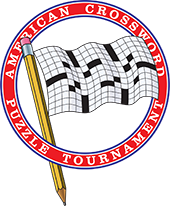At Brown, crossword puzzle tournament draws a crowd
Source: Providence JournalDate: April 5, 2009
Byline: Benjamin N. Gedan
At Brown, crossword puzzle tournament draws a crowd
PROVIDENCE –– They silently stroked their beards, adjusted eyeglasses and nodded their heads, now and again letting loose a satisfied smile. The lucky ones exultantly raised a hand.
A crossword puzzle competition is not your typical collegiate revelry. But the tournament at Brown University on Saturday filled an auditorium. In all, 300 showed up –– more than 200 penciling letters in tiny squares.
"I thought there'd be 10 people here," said junior Jill Lambiase, 21, of East Greenwich, whose two-member team won a prize in the tournament.
For all their celebrated eccentricities, the turnout is a testament to the bookishness of Brown students. Friday night, a campus trivia competition drew almost 100 participants. The only art in the auditorium is a giant periodic table of elements.
But it is also evidence of the growing popularity of puzzles among young people, an unexpected subculture in the Twitter and iPhone generation.
In large measure, devotees trace the rise of the puzzle to one man: Will Shortz, the editor of The New York Times crossword puzzle since 1993.
Shortz, 56, has introduced hints of hip to the once stodgy game, slipping in modern cultural references, for example, that might stump the sexagenarian set. Puzzle creators –– known as constructors –– have gotten younger. So have solvers.
Three years ago, the documentary Wordplay celebrated the Shortz era and hinted that puzzles had tapped into nerd chic. Sure, the featured competitors were a somewhat awkward bunch. But the filmmakers also showcased celebrity solvers such as former President Bill Clinton, Daily Show host Jon Stewart and the Indigo Girls.
Shortz, the "Puzzle Master" for NPR's Weekend Edition, is now a celebrity himself.
At the Brown tournament, Shortz was the special guest. In MacMillan Hall on Thayer Street, students hooted and hollered as he spoke, and they asked for autographs and photos. Winners earned signed copies of puzzle books.
"That's why I came, to lust over him," sophomore Caroline Segal, 20, of New York, said. "He said 'Hey there' to me and I almost passed out."
Senior Nina Fitzerman-Blue, 22, sat behind Shortz and had him sign her planner. "All my roommates are obsessed with him," she said.
Shortz is on a college tour, with stops at Harvard on Sunday and Yale on Monday. (He is also passing through Tufts and Northeastern to play Ping-Pong, his principle hobby.) The newfound interest in puzzles, however, is not only a campus phenomenon.
"He's made it cool –– all the geeks are coming out of the closet," said Laura Maxwell, a 10th-grade teacher at Hope High School who has been solving New York Times puzzles since 1980. "They don't have all this Greek mythology anymore."
In the first year after Wordplay, interest in The American Crossword Puzzle Tournament, directed by Shortz, spiked, forcing its relocation from a Marriott in Stamford, Conn., to a Marriott in Brooklyn. Registration reached 700, up from 500 the year before. Puzzle submissions to the Times have grown by 30 percent.
As newspapers struggle to earn money from their Web sites, the Times has found that the crossword puzzle is the only element of the daily newspaper it can charge for online. Fifty thousand readers pay $40 a year for the puzzles, and it is syndicated to 150 newspapers across the country.
Still, Brown appears to be unique in its embrace of the puzzle. Students are fanatical about the puzzle in the Brown Daily Herald. During lectures, students solve puzzles online. Saturday's event, Shortz said in an interview, was the largest he has seen at a university.
In January, three students founded the Puzzling Association of Brown. Their credentials are impressive: sophomore Joey Weissbrot, 19, is publishing his first New York Times puzzle on Wednesday; senior Dustin Foley, 21, is making his Times debut Monday with a puzzle that includes clues about Star Wars and Notorious B.I.G.; and freshman Natan Last, 18, has published nine times in the Times. Last's 10th puzzle appears April 13.
Weissbrot and Last both interned for Shortz. For a time, Last held the record for the youngest New York Times constructor (16), and he had Shortz write a recommendation for his Brown application.
Crossword puzzles –– quick, interactive and forever hopping between disciplines –– are ideally tailored to the short attention span of today's youth, Shortz said. "Puzzles," he said, "are perfect for this modern age."

